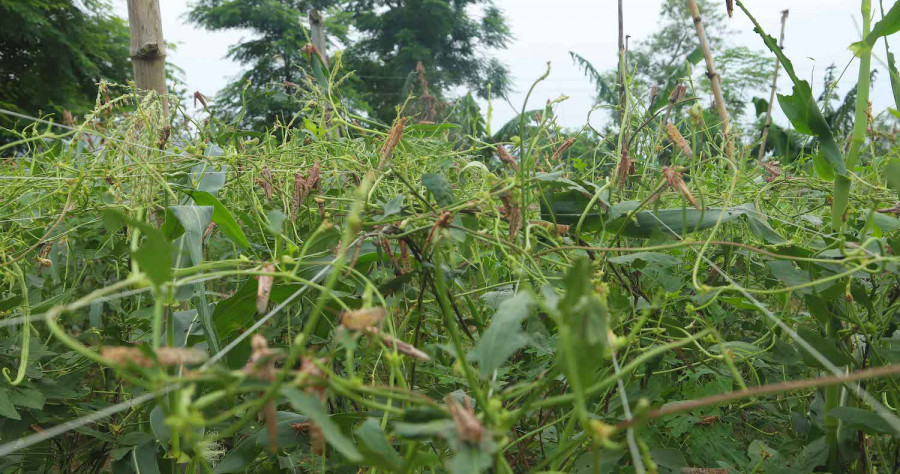National
Locust swarms may enter Nepal again, officials predict
With wind conditions favouring their movement from Rajasthan to Nepal in the next few days, officials warn the threat of locust invasion is not over at least for two months.
Chandan Kumar Mandal
The hide-and-seek between locust swarms and officials in Nepal isn’t over yet as the desert pests are projected to enter the country again in the next few days.
Millions of locusts, which had entered the country from India two week ago, had all of sudden disappeared this week in a respite for Nepali farmers and government officials scrambling to contain them.
“Chances are that the locusts will come to Nepal again,” said Ram Krishna Subedi, senior plant protection officer at the Plant Quarantine and Pesticide Management Centre under the Ministry of Agriculture and Livestock Development. “It is not that they will arrive this evening or tomorrow. But they might in the next few days if the direction of winds remains unchanged.”
With the current wind direction and speed, it will take a minimum of three-four days for swarms to arrive in Nepal, he said.
Winds blowing from the south to the north-east direction had first brought locust swarms to Nepal last month, and as the winds become active again, they are likely to return. The centre has alerted all line agencies that the threat of a locust invasion looms across the country.
Latest updates from observations made in India show that five swarms covering 525 hectares are active in Dausa, 180 km west of Agra. With the prevailing winds, they are likely to reach Allahabad in the next three day.
The southwesterly wind is likely to push locusts in Rajasthan towards Haryana, Madhya Pradesh, Uttar Pradesh and Chhattisgarh, according to the centre, which has projected swarms might invade the Tarai and the inner Tarai.
“If they enter Nepal and continue to fly north, they might die once again due to low temperatures just like the previous swarms,” said Subedi. “But if they remain stuck in the Tarai, they might cause massive damage this time.”
Another five swarms of locusts covering an area of nearly 400 hectares are expected to fly towards Sitapur and Shahjahanpur of Uttar Pradesh. These swarms are likely to fly towards the east with the wind direction. Although their march has been slowed down at due to rainfall, they may also enter Nepal if supported by the wind.
Officials say that the threat of a locust invasion in Nepal will remain for at least two months if Indian authorities can’t control them. “As the summer generation is still breeding, is still premature. Once they become adults, they might come to Nepal even next month,” said Subedi. “The threat of large locust swarms will remain for the next two months if they don’t fly away or India authorities fail to control their spread.”
The previous swarms of locusts, which were estimated to be eight million in number and total of six swarms, had not caused massive damage as feared. However, officials, are not taking the swarms for granted this time.
“We have told the ministry that we will need pesticides in case of a big swarm invasion. They will soon send a circular to other line agencies to procure pesticides and sprayers,” said Subedi. “Small swarms may not cause big damages, but large swarms can be difficult to contain.”




 7.12°C Kathmandu
7.12°C Kathmandu













%20(1).jpg&w=300&height=200)

